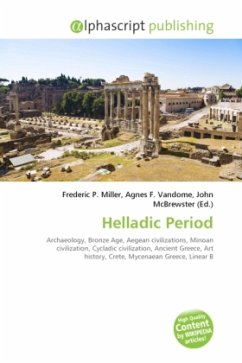Helladic is a modern archaeological term meant to identify a sequence of periods characterizing the culture of mainland ancient Greece during the Bronze Age. The term is commonly used in archaeology and art history. It was intended to complement two parallel terms, Cycladic, identifying approximately the same sequence with reference to the Aegean Bronze Age, and Minoan, with reference to the civilization of Crete. The scheme applies primarily to pottery and is a relative dating system. The pottery at any given site typically can be ordered into early, middle and late on the basis of style and technique. The total time window allowed for the site is then divided into these periods proportionately. As it turns out, there is a correspondence between "early" over all Greece, etc. Also some "absolute dates" or dates obtained by non-comparative methods can be used to date the periods. Absolute dates are preferable whenever they can be obtained. However, the relative structure was devised before the age of carbon dating. Most of the excavation was performed then as well. Typically only relative dates are obtainable. They form a structure for the characterization of Greek prehistory.








